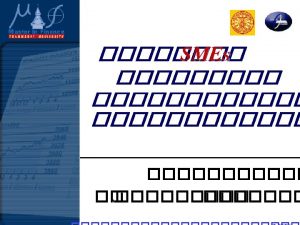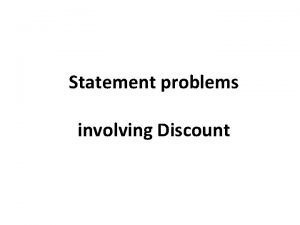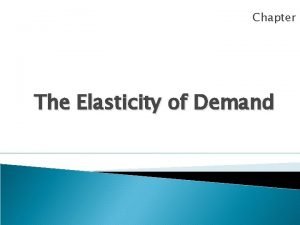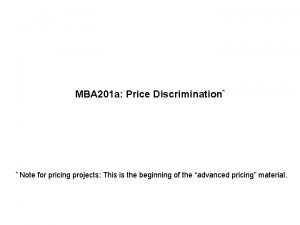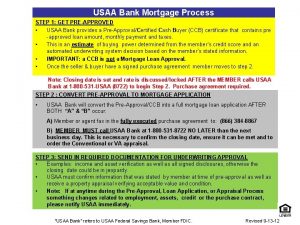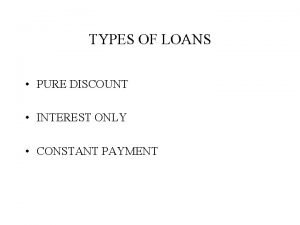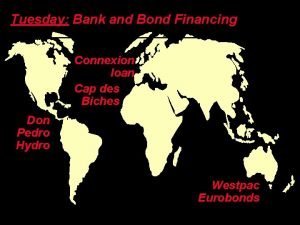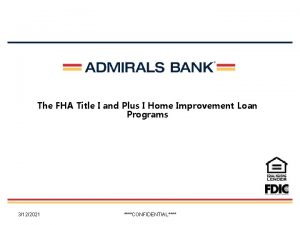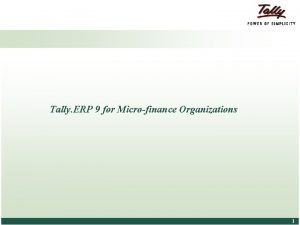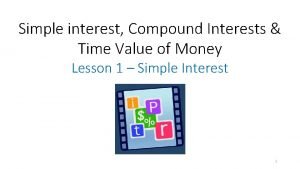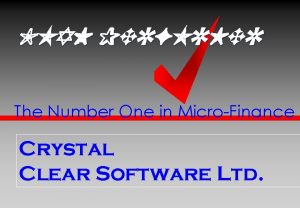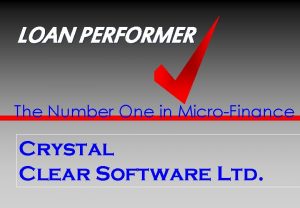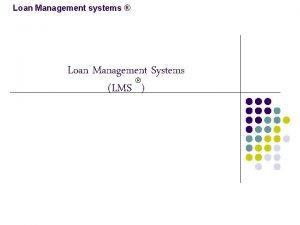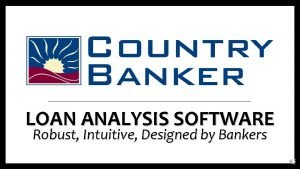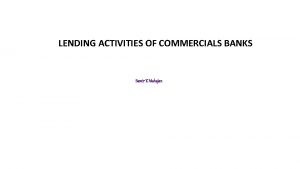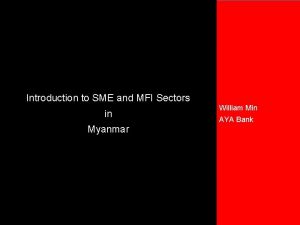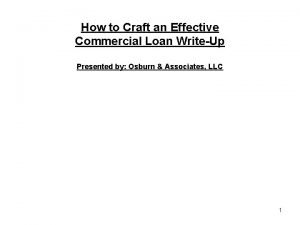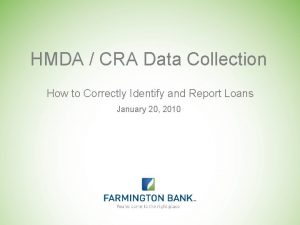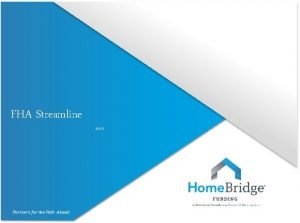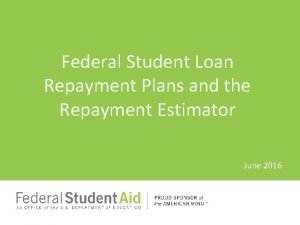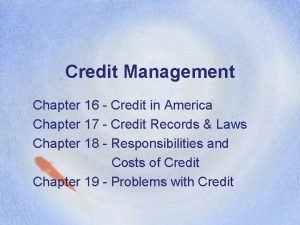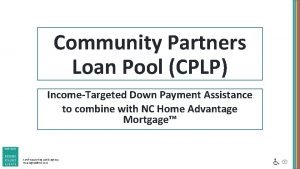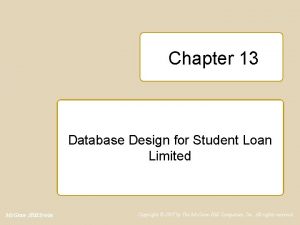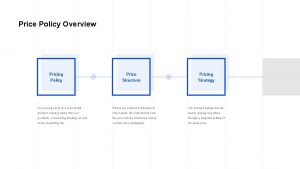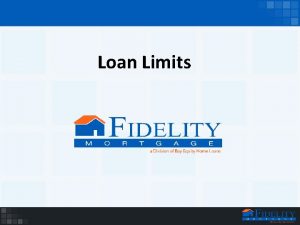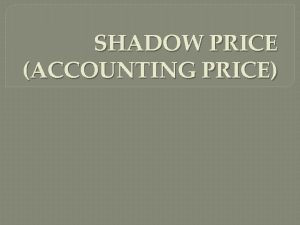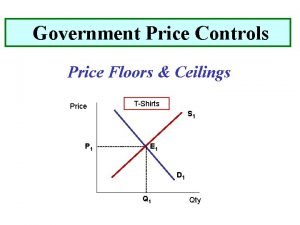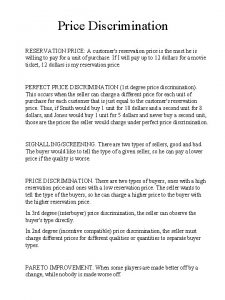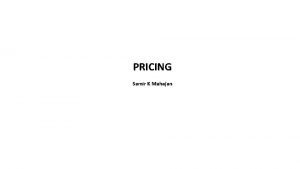Types of Loan Pricing Costplus loan pricing Price

















































- Slides: 49



Types of Loan Pricing Cost-plus loan pricing ��������� ��. ������������ Price Leadership Model Below-Prime Market Pricing (The Markup Model) ������������� ��� ��. ������ interbank ����� Risked-based loan pricing 3



������� (2( Risk-Based Pricing �� ���� ��� (1) ������������ Fair Pricing (2) ����������� Economic Capital (EC) (3) ����������� RAROC (Risk-adjusted Return on Capital) (4)����������� Credit Risk Portfolio Management (5) 6



���������� ������ Risk-Based Loan Pricing ����� “Pricing is Based on Counter-party’s Risk Level. ” Level. 9

����� Lending Rate (Given Rating) = Administration Costs + Risk-Based Spread 10


Risk-Based Spread ����� (1)Expected Loss Charges (2) Hurdle Rate ��� Quoted Rate (����������� ( (3) Funding Costs 12

Risk-Based Spread ������� (1) Expected Loss Charges ����� (1)Exposure at Default (EAD) (2) Recovery Rate (RR) (3) Probability of Default (PD) ������ Credit Rating Expected Loss Charges = PD x { EAD x (1 -RR) } Note: LGD = Loss Given Default = PD x { EAD x LGD } 13

Risk-Based Spread ���� Expected Loss Charges ������ SMEs ������ 1 �� (1) Exposure at Default (EAD) = 1 ������� (2) Loss Given Default (LFD) = 1. 1282% (3) Probability of Default (PD) = 0. 1118% Expected Loss Charges = 0. 001118 x { 1 ���� x 0. 011282 } = 12. 62 ��� 14

Risk-Based Spread ����� Expected Loss Charges ������� (1) ������������ Loan ��� Counter-party ���� (2) ������������ Credit Portfolio ����� Default Correlation ���� Concentration 15


Risk-Based Spread ������� (3) Funding Costs Uses of Fund ��� Loan = Credit Asset ������ Funding ��� Sources of Fund = Debt ������� Long-Termed Bonds + Allocated Economic Equity Capital Providers �������� Required Rates of Return ������������ Required Rates of Return ��� Capital Providers ������� Costs of Fund ��� ��. 17

Risk-Based Spread Funding Costs (K) ���� Kd = Cost of Debt T = Tax Rate Ke = Cost of Equity DE = Debt-to-Allocated Equity Ratio ��� Loan ����� 18

Risk-Based Spread Funding Costs �������� �Funding Costs* = {EC x Ke} + {(1 -EC) x Deposit Rate} * ������ WACC ����������� Deposits ��� Equity Capital ����� 1 �������� WACC ��� Ke ����� ��. ���� Unlevered Firm ���� ��. ������ Funding Cost������ Capital Cost ������� Long. Term Debt 19


Credit Risk Portfolio Model ������ Economic Capital ��� Loan Portfolio ��. ����� � ����� Loan ������� 21


����� Economic Capital Allocation 1. Bottom-Up Approach ���� Va. R ���� Loan �������� ��. ����� Allocated EC { Loan j } = Regulatory Capital { Loan j } 2. Top-Down Approach ��. ����� EC ��� Loan Portfolio ����� Internal Credit Risk Portfolio Model ����������� Loan 23

���� Bottom-Up Approach ����� ��. ��� Allocated EC { Loan j } = Regulatory Capital { Loan j } �������� ������ BIS II 24

������ Bottom-Up Approach ����� ��. ������ SMEs ����� Credit Rating ����� 1 ������� Risk Asset = Risk. Weight (Given Rating) x Asset. Size = 100% x 1 ���� = 1 ������� Minimum Capital-to-Risk Asset = 8. 50% ����� Capital = 8. 50% x Risk Asset = 8. 50% x 1 ���� = 85, 000 ������� Loan ���� 1 ������������ EC = 85, 000 ��� Debt = 915, 000 ��� 25


����� Concentration Risk 27


���� Top-Down Approach ��. ����� EC ��� Loan Portfolio ������ Credit Risk Portfolio Model ����������� Loan ������� ��. ����� Internal Model ����� ��. �� Internal Credit Risk Portfolio Model �� ����� 29

������������� EC { Loan j } ����������� Loan Portfolio �������� ��. �� Loan j ������ (Risk Contribution) Contribution ��������� 2 ���. 1 Incremental Credit Va. R 2. Marginal Credit Va. R ��� Component Credit Va. R 30

Incremental Credit Va. R (IVa. R) IVa. R ������ Credit Va. R ���������������� Credit Portfolio ���� Loan �������� EC ��� IVa. R { Loan j } = Va. R Port ��� j - Va. R Port ������ j ECIVa. R { Loan j } = IVa. R { Loan j } – EL { Loan j } 31





����� MVa. R ��� CVa. R ����� Economic Capital Allocation ����� 36

���������� Capital ������ Assumptions ��� ��. �� Internal Credit Risk Portfolio Model ����� 37

�������� Internal Model ������ . 1 Monte-Carlo Based Risk Contribution (RC)* 2. Analytical RC ��������� * ��� RC ��� EC { Loan j } ������������� Contribution ��� 38

������� Distribution ��� Portfolio Loan Loss ������� Smooth Function ���� 1. Va. R { Portfolio } ������� Smooth Function ��� Loan j 2. Derivatives ������� 39

������� � * * Gourieroux et al. , Sensitivity analysis of value at risk, Journal of Empirical Finance 7, 225 -245. 40

������ . 1 Monte-Carlo Based Risk Contribution (RC) ����� Asset Value Model ��������� Arvanitis and Gregory, 2001, Credit: The Complete Guide to Pricing, Hedging and Risk Management, RISK Publication, London, pp. 90 -98. 2. Analytical RC ������ Credit. Risk+ Model ���������� Tasche, Capital Allocation with Credit. Risk+ 41



���� Funding Costs = {EC x Ke} + {(1 -EC) x Deposit Rate} = (0. 0896% x 8. 24%) + {(1 -0. 0896%) x 2. 27%} = 2. 2753% (������� 1) 44

�������������� = Expected Loss + Operating Costs + Funding Costs = 0. 0013% + 3. 66% + 2. 2753%} = 5. 9369% 45




 Anong ibig sabihin ng price ceiling
Anong ibig sabihin ng price ceiling Cost plus loan pricing model
Cost plus loan pricing model Marked price-selling price=
Marked price-selling price= Hire purchase and installment system difference
Hire purchase and installment system difference Iocl eprocurement
Iocl eprocurement Price discovery and price determination
Price discovery and price determination Measurement of elasticity of demand
Measurement of elasticity of demand Two types of adjustments to list or quoted price are
Two types of adjustments to list or quoted price are Explain price discrimination
Explain price discrimination Va's maximum loan amount for 100 financing is $144 000
Va's maximum loan amount for 100 financing is $144 000 Udel interlibrary loan
Udel interlibrary loan Usaa preapproval
Usaa preapproval What is a pure discount loan
What is a pure discount loan Loan vs bond
Loan vs bond Shakespeare richard ii quotes
Shakespeare richard ii quotes Fha title 1 home improvement loan
Fha title 1 home improvement loan Loan in tally
Loan in tally Mypath student loan
Mypath student loan Student loan wales
Student loan wales Compounding daily formula
Compounding daily formula Tamu short term loan
Tamu short term loan Rhlf
Rhlf Ucsb course reserves
Ucsb course reserves Single family housing section 504 repair pilot program
Single family housing section 504 repair pilot program Unsubsidized loan
Unsubsidized loan Nebraska loan repayment program
Nebraska loan repayment program Nslsc online services
Nslsc online services Va's maximum loan amount for 100 financing is $144 000
Va's maximum loan amount for 100 financing is $144 000 Loan officer job descriptions
Loan officer job descriptions Loan performer software free download
Loan performer software free download Loan performer
Loan performer Miscellanou
Miscellanou Loan analysis software
Loan analysis software Difference between loan and advance
Difference between loan and advance Home loan absa
Home loan absa Aya
Aya India imf loan history
India imf loan history Inventory loan
Inventory loan Loan write up
Loan write up Hmda & cra data integrity reviews
Hmda & cra data integrity reviews Fha 4155
Fha 4155 Fha 203 h
Fha 203 h Nebraska teacher loan forgiveness
Nebraska teacher loan forgiveness Chapter 16 credit in america
Chapter 16 credit in america Efs contractor portal
Efs contractor portal Cplp loan
Cplp loan Simple discount rate
Simple discount rate Loan database schema
Loan database schema Manulife
Manulife Budaya kredit adalah
Budaya kredit adalah

